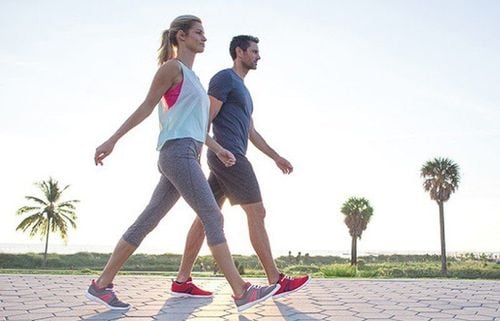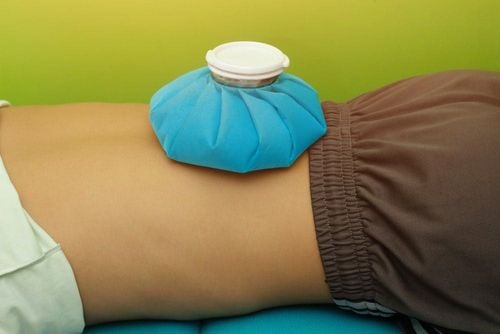Running is a simple sport suitable for all ages, helping to improve health and prevent various diseases. Additionally, studies have shown that running effectively reduces belly fat.
1. Does Running Help Reduce Belly Fat?
Excess belly fat can increase the risk of conditions like heart disease, stroke, type 2 diabetes, breast cancer, colorectal cancer, and Alzheimer’s disease. Furthermore, belly fat can affect appearance and self-confidence. Consequently, numerous methods for reducing belly fat have been proposed, including running.
Research indicates that moderate-intensity running (short or long distances) and high-intensity running (sprints, hill runs, interval training, or HIIT combined with running) significantly reduce belly fat—even without dietary changes. However, moderate to high-intensity running yields the best fat-burning results.
2. Tips for Running to Effectively Reduce Belly Fat
To achieve the best results in reducing belly fat through running, it’s essential to follow proper training methods, use correct running techniques, and maintain a balanced diet and rest routine.
2.1. Fuel Up Before Running
Before running, choose foods that reduce fatigue without causing discomfort. About 30–60 minutes prior, have a light meal rich in carbs and a small amount of protein. Additionally, drinking a cup of coffee can enhance endurance and speed, thanks to caffeine.

2.2. Warm Up Thoroughly
Before running or any workout, warming up is essential to help your body adjust to the intensity and reduce the risk of injuries. A proper warm-up also enhances muscle tone, promotes fitness, and aids belly fat reduction.
Include movements like walking, activating less-used muscles during running (e.g., abdominal, back, and shoulder muscles), ankle rotations, and cross-legged movements. Start running slowly after warming up, then gradually increase your speed
2.3. Alternate Between Slow and Fast Running
Begin your workout with a slow pace, as running too fast initially may lead to early fatigue. Towards the end, slightly increase your speed to boost fat burning, but avoid sprinting excessively.
2.4. Include High-Knee Running
During the initial or final phase of your run, dedicate some time to high-knee running. Raise your knees at a 90-degree angle to your torso for 5–10 minutes to strengthen abdominal and leg muscles.
2.5. Run for Longer Periods
To burn belly fat effectively, running for only 5–10 minutes isn’t sufficient. Extend your running time to increase calorie expenditure. Beginners can start with 2–3 sessions per week to allow their bodies to adjust. As you gain stamina, increase to around 4 sessions per week, with each session lasting about 30 minutes.
Avoid running too early in the morning or too late at night. Early morning runs, right after waking, can shock your body since it isn’t ready for intense activity. Late-night runs may interfere with sleep, negatively affecting health.
2.6 Varying Running Terrain
To effectively burn belly fat through running, it's important to avoid sticking to the same running route. Instead, mix up your runs by incorporating different terrains such as flat surfaces, inclines, stairs, etc. This helps keep things interesting and can improve fat burning.
If you're using a treadmill at home with an incline function, keep the incline below 6% to prevent heel injuries.

2.7 Combining with Other Fat-Burning Exercises
Experts recommend a holistic approach to fat loss, targeting the entire body rather than just the abdominal area. In addition to running, incorporate full-body exercises like planks, squats, jumping rope, and abdominal exercises like crunches.
3. Healthy Diet Combined with Running for Belly Fat Loss
To maximize fat burning, complement your running routine with a healthy diet. Here are some key tips:
- Eat plenty of soluble fiber: This helps you feel fuller faster, reducing overall food intake. Soluble fiber also limits the amount of calories your body absorbs from food.
- Prioritize protein: Foods rich in protein like lean meat, fish, and beans can help you feel full longer by stimulating the production of the satiety hormone PYY.
- Limit fatty and starchy foods: These can contribute to belly fat accumulation.
- Manage stress: Stress can trigger the release of cortisol, a hormone that promotes belly fat storage. Practice relaxation techniques to manage stress.
- Eat fatty fish: Omega-3 fatty acids found in fish like salmon, mackerel, and tuna can help reduce visceral fat and prevent disease.
- Eat a light snack before running: This provides energy and prevents low blood sugar during your run. After your run, a light snack can help your body recover.
- Stay hydrated: Drink plenty of water before, during, and after your run.
- Drink green tea: The caffeine and antioxidants in green tea can boost metabolism and help reduce belly fat.
- Consistency is key. Combine regular running with a healthy diet and you'll be well on your way to achieving your fitness goals.
To arrange an appointment, please call HOTLINE or make your reservation directly HERE. You may also download the MyVinmec app to schedule appointments faster and manage your reservations more conveniently.













